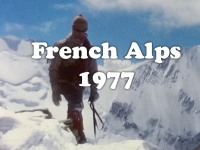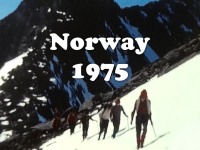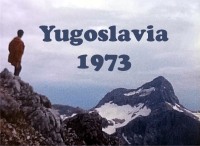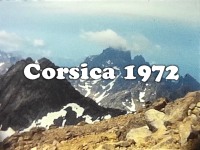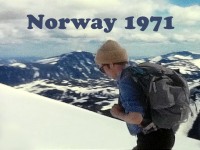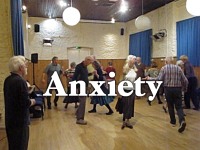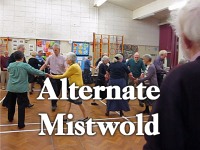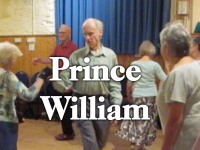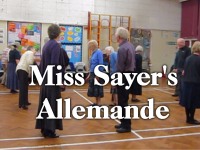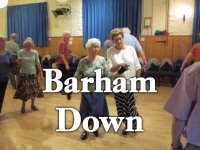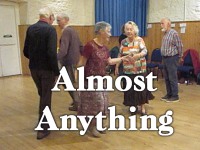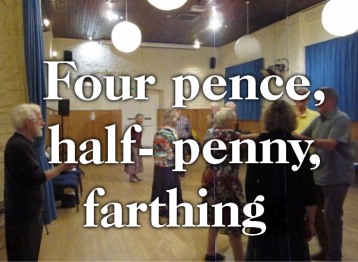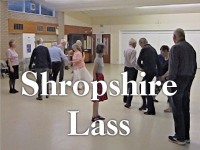Movies by Graham Foster
1. 8mm ciné films
These films were taken on standard 8mm film, not Super 8. Most are on Kodachrome 25 film stock.
The shots were arranged and edited by cutting and joining the film.
The camera that was used did not record sound. For the first three movies a sound track of commentary, sound effects and background was produced on 1/4 inch reel-to-reel magnetic tape. Originally this was synchonised with the film by a tape-loop system built into the 8mm Eumig film projector. For these three the spoken commentaries are originals from the 1970s.
Other items used in the sound tracks are listed at the end of each movie.
These movies can also be accessed on  .
.
 French Alps 1977
French Alps 1977
Graham Foster and Rod Webb climbing in the French Alps above Chamonix during July 1977.
This includes the ascent of Mont Blanc (15,766 feet, the highest mountain in Europe outside the Russian Caucasus).
 Norway 1975
Norway 1975
Imperial College Scout and Guide Club summer expedition 1975 to Norway. Imperial College is in London, UK.
Mountaineering in the Jotunheimen, Hurrungane, Romsdal and Jostedalsbreen regions.
This includes the ascent of Galdh∅piggen (8,100 feet, the highest mountain in northern Europe), and
climbing the North face of the Romsdalhorn.
 Yugoslavia 1973
Yugoslavia 1973
Imperial College Scout and Guide Club summer expedition 1973 to Yugoslavia.
Mountaineering in the Julian Alps and hiking in Italy. These are followed by travel on a railway still operating with steam, and
on the road over the Grand St Bernard pass.
The mountaineering includes the ascent of Skrlatica (8,990 feet, the 2nd highest mountain in Yugoslavia).
 Corsica 1972
Corsica 1972
Imperial College Scout and Guide Club summer expedition 1972 to Corsica.
Mountaineering on this French island, together with travel on a Mediterranean car ferry and back across
the English channel on a giant SRN4 hovercraft.
The mountaineering shown is the ascent of Monte Cinto (8,878 feet, the highest mountain in Corsica).
 Norway 1971
Norway 1971
Imperial College Scout and Guide Club summer expedition 1971 to Norway.
Travel to and around Norway with mountaineering in the Jotunheimen region.
This includes the ascent of Glittertind (in 1971, due to the depth of snow on its summit, the highest mountain in Norway).
2. Digital videos
These were captured on digital cameras which also recorded sound. Shots from multiple cameras have been combined and edited using digital software.
These too can be accessed on  .
.
 Queen's Jig
Queen's Jig
An English country dance from 1703 that is in duple-minor formation, that is "longways and hands-four from the top". Graham Foster calls for the Tuesday Playford Group (Bedford, UK) on 24 September 2019. This includes a walk-through before the dancing starts.
 Anxiety
Anxiety
A folk dance in the style of English country dances. Formation is a big circle of couples. For details of this dance see here. Graham Foster calls for the Tuesday Playford Group on 27 September 2022.
 Alternate Mistwold
Alternate Mistwold
A folk dance in duple-minor formation. For details of this dance see here. Graham Foster calls for Fine Companions (Bedford, UK) on 31 January 2020.
 Prince William
Prince William
An English Country dance published in 1731. Originally a triple-minor, it is now danced in a 3-couple longways set. Details of the variation being danced can be found here. Graham Foster calls for the Tuesday Playford Group on 24 September 2019.
 Miss Sayer's Allemande
Miss Sayer's Allemande
An English Country dance published in 1781. Originally a triple-minor, it is now danced in a 3-couple longways set. Details of the variation being danced can be found here. Graham Foster calls for Fine Companions on 31 January 2020.
 Barham Down
Barham Down
An English Country dance published in 1701. Originally a triple-minor, it is now danced as a duple-minor. Details of the interpretation being danced can be found here. Graham Foster calls for the Tuesday Playford Group on 24 September 2019.
 Taking Liberties
Taking Liberties
A folk dance in a 3-couple longways set. For details of this dance see here. Graham Foster calls for the Tuesday Playford Group on 24 September 2019.
 Almost Anything
Almost Anything
A folk dance in a 3-couple longways set. For details of this dance see here. Graham Foster calls for the Tuesday Playford Group on 27 September 2022.
 Four-pence Half-penny Farthing
Four-pence Half-penny Farthing
An English Country dance published in 1709. Graham Foster calls for the Tuesday Playford Group on 27 September 2022.
 Let's Twirl Around
Let's Twirl Around
A modern contra dance. For details of this dance see here. Graham Foster calls for the Bedford Folk Dance Club on 09 May 2024.
 Shropshire Lass
Shropshire Lass
An English Country dance published in 1701. Originally a triple-minor, it is now danced in a 3-couple longways set. Graham Foster calls for the Bedford Folk Dance Club on 09 May 2024.
